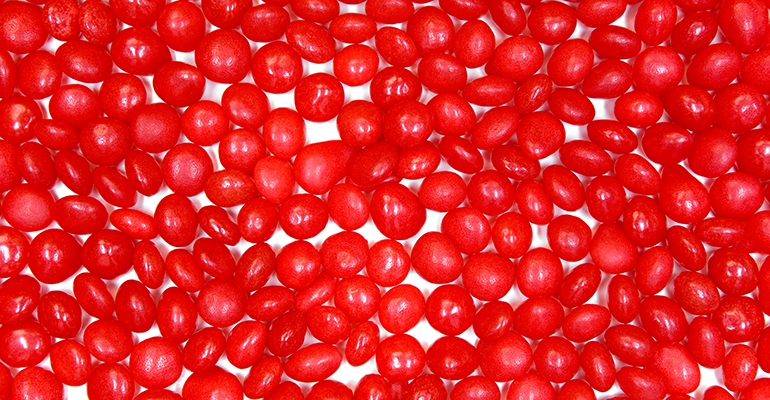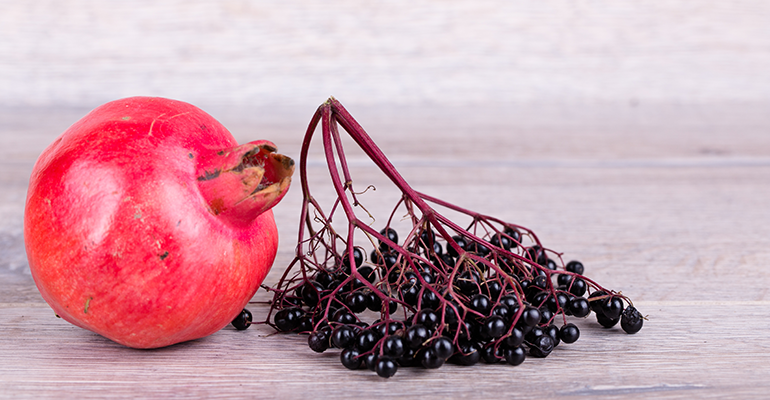News
Replacing Red Dye No. 3
28 Apr 2023As pressure mounts on US manufacturers to replace synthetic food colour Red Dye No. 3, we look at some of the functional alternatives, from red carmine to microalgae, beetroot to purple carrots.
In the US, a cohort of public interest groups have been fighting for a ban on Red Dye No. 3 from food, drugs, and supplements, arguing that it may be linked to cancer and safer alternatives can easily be used.

This month, California approved a bill to ban five chemical food additives – Red Dye No. 3, brominated vegetable oil, potassium bromate, propyl paraben and titanium dioxide.
However, groups like the Center for Science in the Public Interest (CSPI) and Consumer Reports are still urging the FDA to enact a comprehensive ban on the synthetic red dye at the federal level, backed by a petition they filed in November 2022.
Alternatives from nature
Prohibiting Red Dye No. 3 from food will not likely result in products being pulled from shelves, but rather will force brands to reformulate their recipes without the red dye. There are many commercially available ingredients that can be swapped in instead.
Red foods, supplements and medicines can get their colour naturally from plants like beets, pomegranates, purple carrots, purple sweet potatoes, and elderberries.
Red carmine extract is also a popular option, derived from the carminic acid found inside cochineal insects. This method has been used to dye food and textiles for centuries, and in recent years scientists have begun exploring genetically engineered carminic acid to circumvent the labour-intensive process of harvesting the acid from insects.
Carminic acid is commonly used for cosmetics, for example, to achieve a red colour in products like lipstick and blush, and for food in countries that have already banned synthetic red dyes.
Colouring foods – extracted from natural fruit and vegetables that contain just two ingredients – are a clean label alternative. Colouring foods are made using gentle, physical processes such as pressing, chopping, filtering, and concentrating. The products retain the characteristic properties of the source material and the concentrates are not selectively extracted. This means they are not classed as food additives but “foods with colouring properties” and, therefore, qualify for cleaner and clearer labelling declarations.
 © AdobeStock/Andreas Fischer
© AdobeStock/Andreas Fischer
Recent iterations of colouring foods are said to be 50% more intense than previous generations of colouring foods, meaning they can be used in lower dosages to achieve the same effect.
Argentinian startup Michroma is using precision fermentation to produce red food colouring from microalgae. The company’s flagship ingredient will be a red dye that can replace cochineal red, which is produced from cochineal insects. It then aims to scale up production to compete with more expensive plant-based reds, commonly made from beetroot, before targeting petroleum-based colourants.
Red Dye No. 3: Banned in cosmetics but permitted in food
Red Dye No. 3 is already illegal in topical products like cosmetics in the US, but is still widely used in consumables like candy, vitamins and medication. The FDA first banned Red Dye No. 3 in cosmetics and externally applied drugs in 1990, based on animal research that linked it to thyroid cancer.
Red Dye No. 3 has been restricted in Europe since 1994, and food dyes are regulated by the European Food Safety Authority. The group’s Panel on Food Additives and Flavourings evaluates the safety of colours and additives based on relevant scientific studies and data on toxicity and human exposure.
In this regard, the American public interest groups and certain lawmakers consider the US to be “many steps behind the rest of the world” when it comes to food safety.
“The widespread use of Red Dye 3 is particularly concerning since it is found in many products marketed to children who are especially at risk of developing health problems from exposure. It’s time for the FDA to protect public health by getting Red Dye 3 out of our food,” said Michael Hansen, a senior staff scientist for Consumer Reports.
The formal petition filed with the FDA in the fall garnered more than 22,000 comments before the public comment period ended 18 April. Consumer Reports also delivered its own petition to the FDA with 35,000 signatures of support on 3 April.
“If the data were strong enough to ban Red 3 in cosmetics and external drugs 30 years ago, they’re surely strong enough to ban it today in foods, oral drugs, and dietary supplements,” said Peter Lurie, president of CSPI.
“The primary purpose of food dyes is generally to make junk food look more attractive, especially to kids, or to trick their parents into thinking a food contains a healthy fruit like strawberries. When the purpose is purely cosmetic, why is any level of risk acceptable?” Lurie said.
The public interest groups argue that any link to cancer in animals or humans is enough to justify the dye’s ban. CSPI and the other organisations also said that what little research has been conducted to study the effects of the dye on humans has not been sufficient and does not prove its safety.